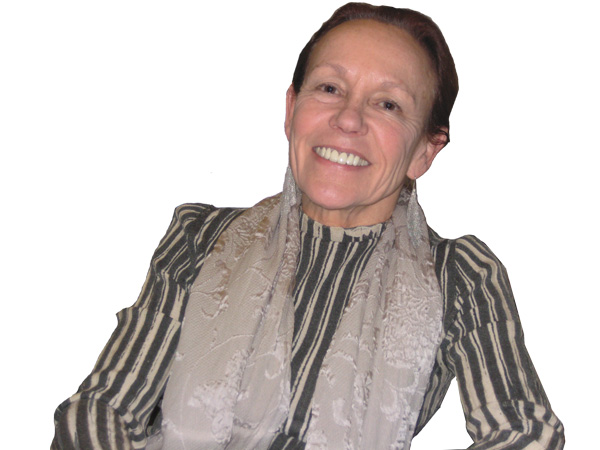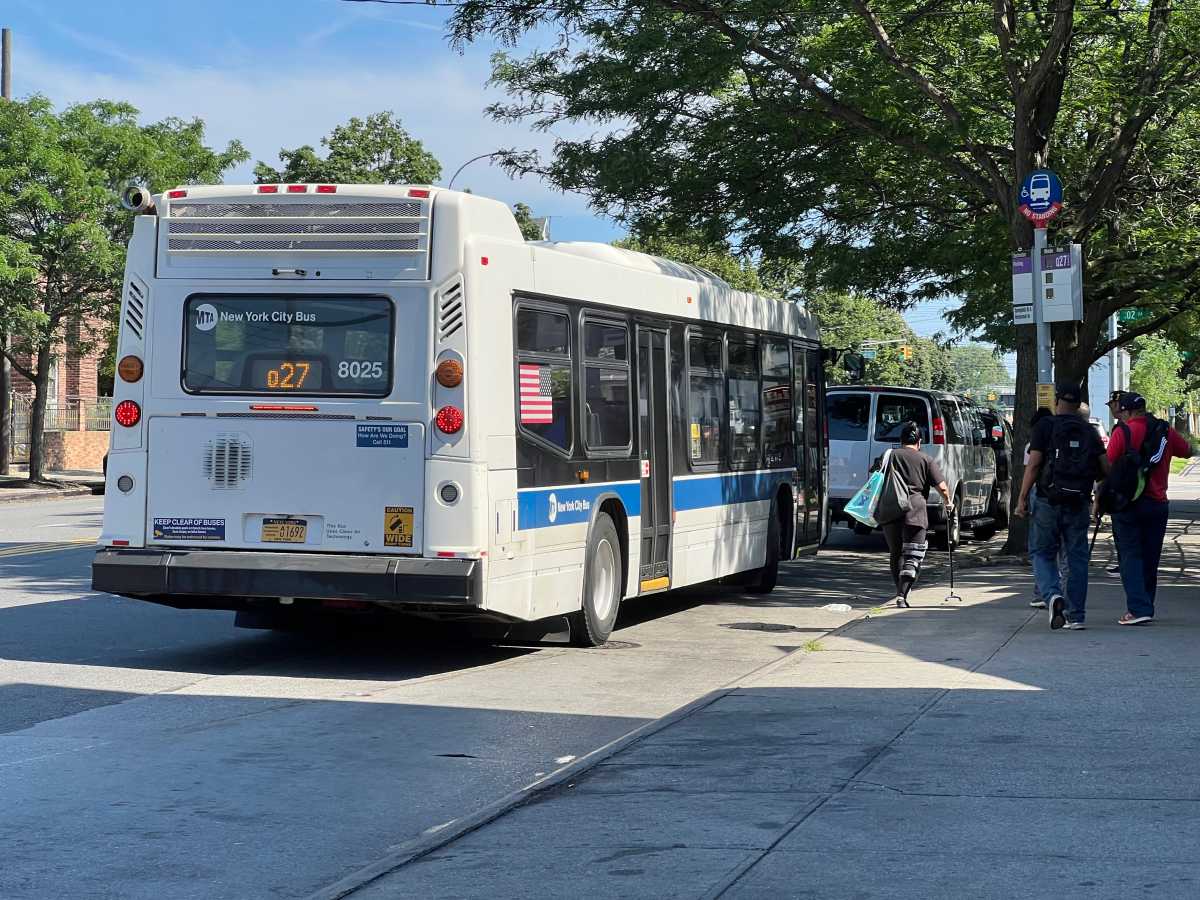 Landscape architect Signe Nielsen has shaped several public spaces — many of them in Lower Manhattan. Nielsen, 64, wears many hats: professor, author, Public Design Commission president and co-founder of Mathews Nielsen Landscape Architects. She talked to Downtown Express at her Financial District office earlier this month about her myriad projects; Tribeca, where she has lived since the ‘70s; and how she moved from dance to landscape architecture.
Landscape architect Signe Nielsen has shaped several public spaces — many of them in Lower Manhattan. Nielsen, 64, wears many hats: professor, author, Public Design Commission president and co-founder of Mathews Nielsen Landscape Architects. She talked to Downtown Express at her Financial District office earlier this month about her myriad projects; Tribeca, where she has lived since the ‘70s; and how she moved from dance to landscape architecture.
Interview has been condensed and edited.
—Dusica Sue Malesevic
Did you grow up in New York?
I moved here when I was six. I was born in Paris, France. My father was in the diplomatic service. I grew up on the Upper East Side. Then I went away to college and I worked in Colorado for a year. Then I moved back for graduate school, worked here for a bit. Moved to Greece for a couple years, moved back to New York — and have never left.
You attended Smith College for political science. Why did you make the switch to landscape architecture?
I was a professional dancer for many years and I went to Smith with the idea of studying choreography. I graduated in 1972. It became rapidly apparent to me that dance was irrelevant and that the issues of the world were far more serious than dance. And that I needed a profession I could make an impact.
So I thought about environmental law — that was my motivation [to study] political science. Then I started talking seriously with people about what it meant to be an environmental attorney. I don’t know why it had never occurred to me that if I worked for a law firm I actually had to take whatever case they took. And so sometimes I might be actually having to defend BP — that compromise was way more than I could handle.
Had no plan B. It was sort of a toss up of whether I went to Harvard or Yale law schools so I was trying to evaluate the difference between the two. [I got] to know some Yale architecture students and they had been given a grant to build their thesis project, which was an elementary school [in Colorado]. They were looking for volunteer construction workers. So I volunteered. I was an only child. We had a house that was always falling down [on] Fire Island. My father had taught me how to use just about every tool. All of us lived in various tents but it was incredibly exciting to sit around at the end of the day and talk to the architects.
One day one of the fellows said to me, ‘What are you going to do?’ I said, ‘I have no idea.’ ‘Have you ever considered landscape architecture?’ I said, ‘Never heard of it.’ So he explained it to me, basically, it’s everything we’ve been doing but outside. And I said, ‘That’s it. That’s what I’m going to do.’ I got in my truck and I drove back to New York … and went to get a job as a landscape architect.
How did you get your start?
I went through the yellow pages and I sent a letter to everyone who was listed as a landscape architect and nobody responded. Somewhere along the line, somebody said, ‘Please be sure to bring your portfolio.’ so I slapped together whatever I could do. I got to his office and I sat down. I started going through what was supposed to be my portfolio.
He said halfway through, ‘So you don’t actually have a degree in landscape architecture? Do you know how to type?’ As I matter of fact I don’t. I specifically didn’t learn how to type so that I could never be a secretary.
I ended up, for a variety of reasons, deciding that City College was where I was going to go for landscape architecture. Then in my first year, [Nicholas Quennell] was my professor and he hired me. I worked for him part time during school. I worked for him fulltime until I moved to Greece.
By moving to Greece where they didn’t have that legacy [of apprenticeship] — they didn’t even have landscape architecture as a profession. I never would have been offered a project — I was responsible for the parks and open space for a new city in Morocco — in the United States.
After projects in the Middle East, My husband decided he wanted to move back to America so we did. Then I worked for M. Paul Friedberg and Partners, [a landscape architecture and urban design firm]. [Friedberg] wouldn’t have put me on the projects he did if I hadn’t had that experience in Greece. He put me a competition to design the new capital for Alaska, which was really exciting.
Later, when I got pregnant at another job, I just decided I would do part-time work. I called my two prior bosses, if you’ve got any reject work you want to send my way. And they did. I also started teaching at New Jersey Institute of Technology.
So that’s what kind of kept body and soul together until my daughter was born. My plan was that when she got to be old enough for daycare or I felt not guilty anymore, I would go back to work. But then I started to get more and more work.
You founded your own firm in 1979.
It was so not a conscious decision. It really was just trying to figure out — and then my husband left me and I was a single mom — how to work in the career I had chosen and make enough money to make ends meet. The thing that was really shocking was that the kind of projects I was given to do on my own were very small, and quite frankly very uninteresting, given that I had this marvelous set of opportunities to do big scale work. The shift downward in scale and complexity was difficult to deal with.
When did you move to Tribeca?
I moved there in 1973 to Chambers St. Before we moved to Greece, my husband found a burnt-out building on the corner of Duane and Greenwich and he said, ‘Let’s get this building.’ [He] found three other friends, we can get a ten-year net lease for a $1,000.
Now, when we came back from Greece, it was a burnt-out building so we couldn’t exactly move in there. So we sublet an art studio — it was a huge loft — in Soho while we fixed it up. We did almost all the labor ourselves except for the plumbing and electrical. I’m still there.
Did you like the neighborhood?
Oh no, [it was] cheap rent. We’d been living in a railroad flat on 16th St. on the West Side. My husband was always out, cruising around and checking stuff out. Came back one day and said ‘I found this really cool neighborhood with cheap rent.’ To go from, whatever, an 800 sq. ft. railroad flat to a 3,000 sq. ft. wide-open space on top of Cheese of All Nations was the most wonderful thing I’d ever experienced. And I’ve never left — not a minute.
How has the neighborhood changed?
I often say that it has evolved as I’ve evolved. To get your shoes fixed or dry cleaning — I used to have to take it work ‘cause there wasn’t that kind of service. I can’t just bemoan the good old days — that would be really disingenuous.
Within a month, my pet store closed, a deli closed and what I even thought was a rather upscale restaurant, The Harrison, closed — that was not exactly McDonald’s. It’s shocking to me. I patronized them for years and so I would ask them, of course, why are they leaving. When I found it was rent, I think that’s one thing that’s saddening.
I used to look down at Tribeca from the World Trade Center. I did work in the World Trade Center. I’d look down at our neighborhood — it was obviously tall buildings to the south, tall buildings creeping around to the east and tall buildings growing on the north. And it was getting sandwiched — you could see it.
Talk about some Downtown projects. Favorites?
The Tribeca section of Hudson River Park, which is still ongoing. First of all, I worked on the master plan that’s starting in ’93 — the whole park. We were awarded this section in 2005. [Gets up to point to the map of the park on her office wall.]
The two [unfinished] pieces are Pier 26, from the restaurant boathouse out and this bit right here between Piers 25 and 26, which is construction staging for Pier 26. So that is certainly one of my favorite projects.
I’ve worked on it for nine years and will hopefully continue to work to finish it. It’s been really wonderful to have people stop me in the street and just say, ‘Oh, I love this or I love that’ or ‘Can we have more of this or less of that.’ That’s certainly near and dear to my heart.
I think Duane Park [on Duane St.] was a really happy story that resulted in long-time friendships.
[It was] one of the more successful private public engagements I ever worked on.
For me, no project is too small. Projects can be too boring or uninteresting but they cannot be too small. Now we’re doing Bogardus, [on Hudson St. near Chambers St.] which is a little bigger than Duane Park. I know that’s going to have an even bigger impact because it’s right by a huge mass transit facility. That has different challenges because how do you ensure it’s still a neighborhood place at the same time that corner is effectively overrun by thousands of people all day long. Achieving that balance is, to me, the real challenge.
What else do neighbors say?
I get lots of ‘What are you going to do about the rats?’ It’s not always flattering. You talk to folks around the country and they say ‘Oh, you live in in New York City and what’s that like?’ You know I live in this really great neighborhood. Between my house and the subway, I’ll run into at least seven people I know.
I have these plants, which I keep out on the sidewalk in front of my building, and on Saturdays when I garden, I would say probably between six to 12 people stop and talk to me — about half of them know me and half of them don’t. [When] a person thanks me for improving their walk or the look of Duane St. or the sidewalk or their child’s day, it so incredible. I got these 14 pots and people know I love them and they’re very respectful — never been stolen. My biggest problem is, of course, rats. That aside, I do feel that Tribeca is a neighborhood.
The seminal moment in Tribeca was those of us who stayed after 9/11. People that I knew their face but I didn’t know their name, I then got to know their name. We remember each other.





























